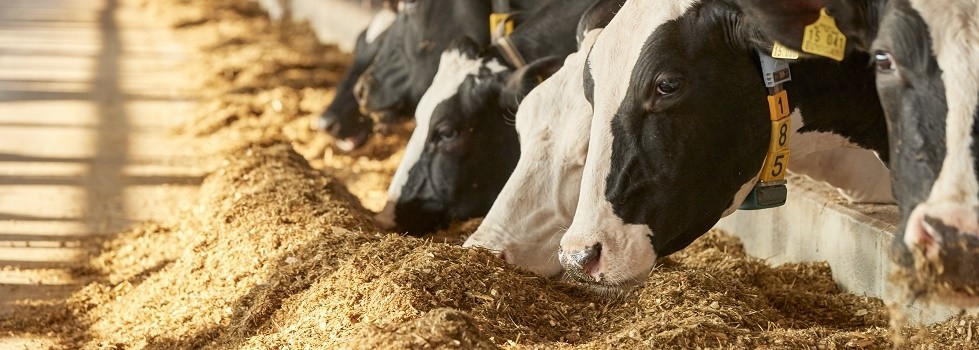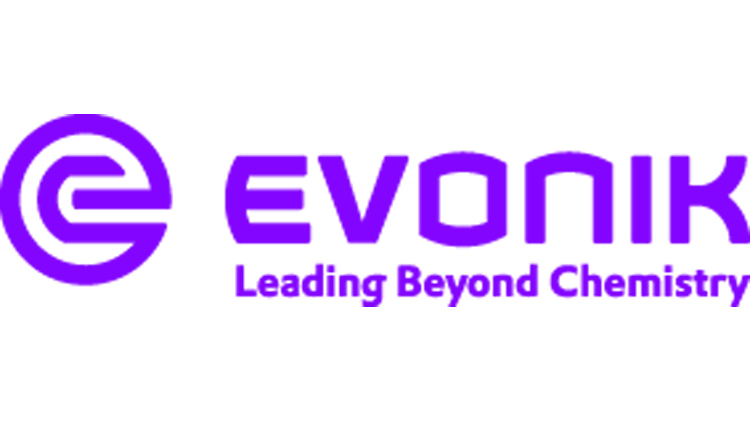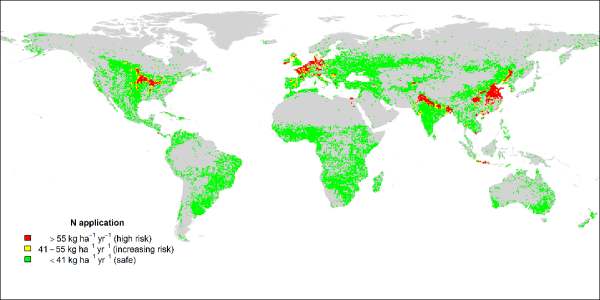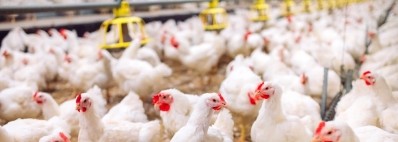Promotional Features
Reducing nitrogen emissions in animal husbandry with amino-acid enriched feed
Evonik’s animal feed solutions help reduce nitrogen emissions in meat and dairy production, benefitting animal health and the environment
Mankind’s growing hunger for meat and dairy disrupts natural environmental cycles in various ways. According to the Planetary Boundaries model proposed by environmental researchers, humans have been changing the nitrogen cycle to a degree that could trigger irreversible changes on a large scale and substantially alter the functioning of the Earth System. Evonik’s animal feed solutions can reduce the burden on the environment by lowering crude protein in feed and reducing nitrogen excretion.
In 2009, researchers led by Johan Rockström from the Stockholm Resilience Centre and Will Steffen from the Australian National University aimed the spotlight at humanity’s impact on Earth system processes, tipping points, and ‘safe zones of operation’ within environmental boundaries. The researchers have since defined nine key processes as part of the planetary boundaries framework, including biosphere integrity, chemical pollution, climate change, and freshwater use. For each process, the researchers have defined a boundary, which if exceeded, means that the “[Earth system] functioning may be substantially altered,” as the researchers phrase it.
Far-reaching disruption of the nitrogen cycle
Climate change is often communicated as the most urgent environmental challenge of our time. So it may be a surprise to see that according to the planetary boundaries framework, the nitrogen cycle – part of the biogeochemical flows boundary – is in deep red territory, far beyond that of climate change.
Figure 1: The planetary boundaries. J. Lokrantz/Azote based on Steffen W et al. (2015)
The challenge in a nutshell: Since nitrogen is an essential element for plant growth, vast amounts of nitrogen are used in agricultural fertilizers. Our hunger for animal-based proteins is growing due to a combination of population growth, rising per-capita income and progressive urbanization, with the OECD projecting a 12 percent expansion of global meat production over the 2020–2029 decade. And as farming increasing numbers of animals requires increasing numbers of crops to be grown to feed them, the additional fertilizer use puts a heavy burden on natural nitrogen flows.
Nitrogen taken up by crops is not a problem per se. But a lot of it gets lost, explained researchers from the Stockholm Resilience Center: “Human activities now convert more atmospheric nitrogen into reactive forms than all of the Earth’s terrestrial processes combined. Much of this new reactive nitrogen is emitted to the atmosphere in various forms rather than taken up by crops. When it is rained out, it pollutes waterways and coastal zones or accumulates in the terrestrial biosphere.”
This excess nitrogen threatens marine and aquatic systems in the sea, creating huge ‘dead zones’ where most fish and marine mammals can no longer survive. The Gulf of Mexico, for example, contains a dead zone spanning around 5,400 square miles due to nitrogen run-off from farms in the US Midwest. The environmental impact is not evenly distributed across the globe, but particularly heavy in the US Midwest, Western and Central Europe, North India, and large parts of China.
The 2019 Global Sustainable Development Report (GSDR) acknowledges the importance of nitrogen fertilizers for ending poverty and hunger as well as for improving health and well-being, but states: “Nitrogen run-off and leaching are responsible for toxic aquatic algal blooms, which result in depleted oxygen levels, fish death and loss of biodiversity. Nitrogen fertilizer is also responsible for more than 30 per cent of agricultural-related N2O emissions, with the sector being the major source of global N2O emissions, which has potent greenhouse gas effects and thus has the potential to contribute to climate change.”
Figure 2: Geographical distribution of the control variable for nitrogen, highlighting large agricultural zones where the N boundary is transgressed.
Nitrogen emissions from animal husbandry
Meat production is one of the key causes of nitrogen pollution in soils and water. According to a recent assessment, “[g]lobal livestock supply chains have significantly altered nitrogen (N) flows over past years, thereby threatening environmental and human health.” The assessment concludes that “[the global livestock] sector currently emits equivalent to one-third of current human-induced N emissions [,] sufficient to meet the planetary boundary for N. Of that amount, 68% is associated with feed production.”
According to the researchers, ruminant supply chains of milk, meat and co-products cause 71 percent of total N emissions from livestock, while production of eggs and meat from chicken and pork contributes the remaining 29 percent. Nitrogen utilization significantly differs between animal species, breeding lines and husbandry system. Poultry is comparatively efficient, with life-cycle N-use efficiency for broilers ranging between 32 and 67 percent, for backyard chickens between 6 and 60 percent, and for layers between 3 and 60 percent. Ruminant-meat systems are generally less efficient on average while exhibiting a larger range between 1 and 72 percent.
While a shift away from animal-based proteins towards a diet richer in fruits, vegetables, nuts and legumes could ease nitrogen loads, this is not to be expected in the medium term – quite the contrary: According to the FAO, global annual livestock production could reach 455 million metric tons by 2050, compared to 258 million tons in 2005/2007 and 336 million tons in 2018.
Environmental and animal protection organizations promote both consuming fewer animal products or foregoing them as far as possible, and taking a more animal-welfare focused production approach. Putting only the latter into practice while keeping production high, however, would be counterproductive regarding nitrogen emissions since more space and more physical activity for animals ultimately diminish nutrient efficiency.
But we do have levers to mitigate the impact of animal husbandry on natural nitrogen cycles – for example, changing the animal feed composition: With a low-protein, amino-acid enriched feed, farmers can both reduce the amount of fertilizers needed to produce a set amount of meat and other animal-based protein, and reduce harmful nitrogen excretions.
Reducing raw protein, supplementing amino acids
A challenge in animal husbandry is feeding a healthy and balanced diet that contains all essential amino acids which cannot be synthesized within the animals’ bodies.
German chemist Justus von Liebig (1803–1873) has popularized the “law of the minimum”, where the scarcest resource (such as a specific nutrient) limits crop growth. In the widely used “barrel” metaphor, staves of different length illustrate this idea: The shorter the stave, the more deficient a specific resource. Thus, the shortest stave limits the barrel’s filling capacity. Liebig’s barrel can also be applied to the nutritional potential of animal feed, where staves represent the essential amino acids.
Common feed ingredients such as wheat, corn, soybeans, and peas are “incomplete”, meaning they are all low in one or more essential amino acid. To provide livestock with all necessary amino acids, farmers can simply feed “more of the same” by adding plant-based protein sources such as soybean. However, this unselective approach results in overfeeding as the additional food also contains amino acids that are already abundant.
For farmers, that means a higher feed bill and often a heavy dependance on imported feed ingredients; for livestock, a burden on their metabolism and health; and for the environment, multiple downsides such as deforestation for additional cropland, higher transportation emissions for imported feeds, increased water consumption to allow animals’ kidneys to excrete excess nitrogen, more nitrogen fertilizers, and a higher nitrogen concentration in the manure which often ends up in the environment as well.
A targeted approach to improve feed efficiency is to supplement the most deficient amino acids. In the barrel metaphor, this corresponds to lengthening the shortest staves to efficiently improve capacity rather than inefficiently lengthening all staves by feeding e. g. more soybean meal.
Figure 3: Liebig’s barrel illustrates the usefulness of targeted amino acid supplementation.
For dairy cows, methionine is usually the most-deficient – and thus limiting – amino acid. A targeted supplementation e. g. with Evonik’s Mepron supplement, where DL-methionine is coated with a time release film to deliver it to the cow’s small intestine, lengthens the shortest stave to match the length of the second limiting amino acid. This supplementation significantly improves capacity – or feed conversion rate and nutritional capacity – without the detrimental effects of feeding more crude protein.
According to a rule of thumb in the animal feed industry, a one-percent reduction of protein level in the feed while balancing its amino acid profile leads to a ten-percent reduction of nitrogen excretion with the associated negative environmental impact. The reduction of crude protein also impacts water consumption: Animals need water for the metabolic processes to dispose surplus nitrogen deriving from surplus protein as urea (pigs) or uric acid (poultry) with urine. Moreover, the approach helps reduce the quantity of plant-based feed ingredients, enhances feed conversion efficiency, and results in a healthier and more balanced diet.
Conclusion
A balanced animal diet with reduced raw protein content and supplementation of specific amino acids helps make the production of animal-based protein more sustainable in multiple ways. In particular , it enables farmers to bring down nitrogen pollution through both the reduction of nitrogen excretion and feed consumption, thus mitigating the impact of animal husbandry on the biogeochemical nitrogen flow – and thus, ultimately the function of the Earth System.
[1] Rockström J et al. (2009): Planetary Boundaries: Exploring the Safe Operating Space for Humanity. Ecology and Society 14 (2). URL: https://www.ecologyandsociety.org/vol14/iss2/art32/
[2] Steffen W et al. (2015): Planetary boundaries: Guiding human development on a changing planet. Science 347 (6223), https://doi.org/10.1126/science.1259855
[3] https://www.stockholmresilience.org/research/planetary-boundaries.html
[4] OECD/FAO (2020): OECD-FAO Agricultural Outlook 2020-2029, OECD Publishing, Paris/FAO, Rome, https://doi.org/10.1787/1112c23b-en
[5] Stockholm Resilience Center: The nine planetary boundaries. Retrieved 11 June 2021, https://www.stockholmresilience.org/research/planetary-boundaries/the-nine-planetary-boundaries.html
[6] National Oceanic and Atmospheric Administration (2021): ‘NOAA forecasts average-sized ‘dead zone’ for the Gulf of Mexico.’ Retrieved 28 June 2021, https://www.noaa.gov/news-release/noaa-forecasts-average-sized-dead-zone-for-gulf-of-mexico
[7] Independent Group of Scientists appointed by the UN Secretary-General (2019): Global Sustainable Development Report 2019: The Future is Now – Science for Achieving Sustainable Development.
[8] Potter P et al. (2010): Characterizing the spatial patterns of global fertilizer application and manure production. Earth Interact. 14 (1–22), https://doi.org/10.1175/2009EI288.1
[9] Uwizeye A et al. (2020): Nitrogen emissions along global livestock supply chains. Nature Food 1, https://doi.org/10.1038/s43016-020-0113-y
[10] Uwizeye A et al. (2020): Nitrogen emissions along global livestock supply chains. Nature Food 1, https://doi.org/10.1038/s43016-020-0113-y
[11] Alexandratos N, Bruinsma J (2012): World agriculture towards 2030/2050: The 2012 revision. ESA Working paper No. 12-03. Rome.
[12] FAO (2019): Meat Market Review, March 2019. Rome.







